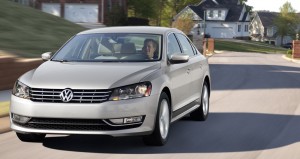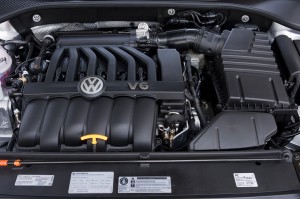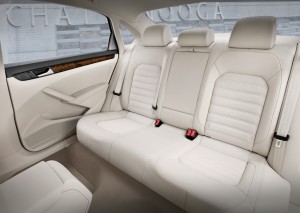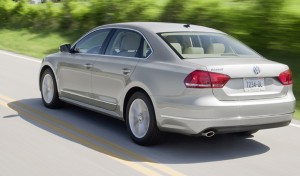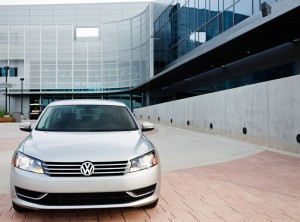 For decades, Volkswagens were the car you bought if you wanted something just a bit different than the Camrys, Accords and Malibus. If you lust after a more expensive German sedan, but you’re spending Chevrolet money.
For decades, Volkswagens were the car you bought if you wanted something just a bit different than the Camrys, Accords and Malibus. If you lust after a more expensive German sedan, but you’re spending Chevrolet money.
For a long time, it worked well enough. The brand’s small, but loyal band of fans bought them because they had real German engineering at a much more manageable price than BMW, Audi or Mercedes and because they weren’t Camrys, Accords or Malibus.
But the objectives in Wolfsburg have changed. VW has made it very clear that it wants to be the largest automaker in the world. You may be thinking “Geez, I probably see eight Toyotas for every VW,” but Volkswagens are more popular throughout the rest of the world. VW also has nine other brands – a couple of which Americans don’t even know exist. Besides the eponymous brand, VW also has owns Audi, Bugatti, Bentley and Lamborghini. But it also has SEAT and Skoda – European brands that have never been sold here.
While Europe and other world markets are far bigger to VW than is the U.S., the automaker still decided it needed to increase sales here to reach its goals.
So, the automaker decided that if it was going to increase U.S. sales, it would need to follow the script written by Toyota, one of the automakers it will have to surpass. It would make cars tailored to the tastes of the American majority, rather than the few who appreciated the slightly quirky VW of old.
One of the products of that effort is this Passat, a car that VW expects to help lead its U.S. sales surge. The automaker has made a $1 billion bet on the Passat with a sparkling new plant in Chattanooga, Tenn.
Three things stand out about the Passat:
- It’s huge. A hot tub should be an option for the back seat. Kareem could sit back there comfortably.
- The styling is nondescript. Designed to neither excite nor offend anyone, the Passat easily fades into the crowd.
- A bargain base price, even if few people will ever buy one at that level.
And the Passat has other attributes that Americans seem to love. Cheesy fake wood that looks and feels like plastic? Many fake trees will be sacrificed for the Passat. Buttery smooth ride designed to even out this country’s pockmarked road? The Passat floats like a butterfly, but without the bee sting.
The Passat’s base price actually scoots in under the $20K mark at $19,995, although destination means the least you can pay for one is $20,765.
For that price, the Passat comes with a 2.5-liter five cylinder, rated at 170 horsepower, which is on the low side amongst its competitors, and either a five-speed manual or a conventional six-speed automatic.
The optional V-6 is a lusty 3.6-liter mill with direct injection, producing 280 horsepower. And instead of the traditional automatic, the more powerful engine gets VW’s superb six-speed automated manual transmission called the Direct Shift Gearbox or DSG.
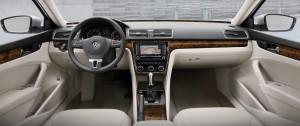
Americans must love shiny imitation wood trim because many automakers keep putting it in their cars.
The Passat is also available with VW’s excellent 2.0-liter, 140-horsepower four cylinder turbodiesel. While hybrids have become the popular choice for the fuel conscious, those folks would do well to check out VW’s little diesel because oil burners excel at the kind of driving that is typical here with the wide-open spaces that dominate the American landscape.
The transmission is tremendous. While some other automakers are putting dual-clutch automated manuals in small cars such as the Ford Fiesta, not many are putting them in traditional midsize sedans like the Passat. OK, no one has dared put one in a midsize, except VW. Typically, automated manuals aren’t quite as smooth as traditional automatics, but VW’s version is simply the best of the breed.
In normal, everyday driving, the DSG feels a lot like a traditional automatic. But when you ask for it, the DSG will snap off shifts faster than you can flip a light switch.
The transmission also has a Sport mode, but it seems superfluous. Shifts are already right-now quick in D, so about all the S mode delivers is holding lower gears longer and snappier downshifts when decelerating. There are also shift paddles on the back of the steering wheel. Use them in D or S.
The test car, a V6 SEL Premium, priced out at $32,720, with no options.
For that price, the Passat comes standard with leather sport seats, powered and heated in front, keyless start and a power sunroof.
This car came with soft cornsilk beige leather. The seats are wide and comfortable – perfect for Americans’ somewhat expansive physiques. The instruments are legible, the controls, for the most part easy to find and use. The exception is VW’s insistence on putting the cruise control on the end of the turn signal stalk. Steering wheel buttons or a dedicated cruise control lever would be easier to use.
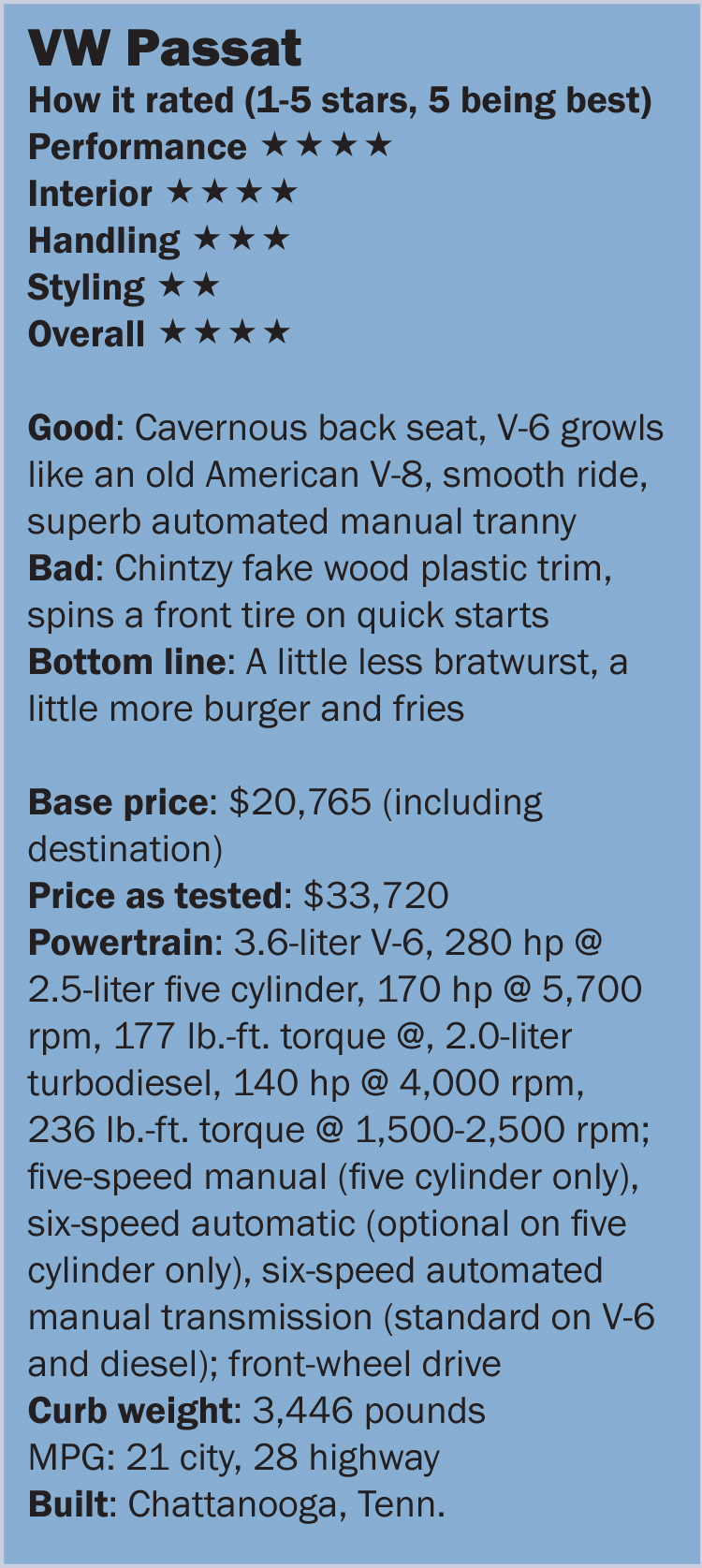 The woodgrain trim pieces feel cheap. Americans must like this stuff – VW is far from alone in slathering their interiors with imitation wood trim that looks and feels like plastic. Auto scribes are left to wonder why. At least there are trim levels where isn’t standard.
The woodgrain trim pieces feel cheap. Americans must like this stuff – VW is far from alone in slathering their interiors with imitation wood trim that looks and feels like plastic. Auto scribes are left to wonder why. At least there are trim levels where isn’t standard.
Normally something like footwell lights doesn’t warrant a comment, but the Passats stand out because, well, because they stand out. They’re bright enough to see the mustard stain on your shoes from lunch, even when it’s dark as midnight outside.
While the back seats are expansive, there are no A/C vents. Rear seaters do get a nice center armrest with cupholders.
While many automakers have upped the style on their midsize sedans – even the Camry is showing a bit of flare these days – VW went with a very conservative design. Painted in Tungsten Silver Metallic, this car blends in.
The car soaks up bumps with ease, but it feels floaty, often bobbing once or twice after the initial impact. German sports sedan? Umm, no.
The powerful engine makes passing a snap, but quick starts can be a problem. Give it even half throttle off the line and the Passat tends to spin its left front tire and keeps spinning it until you relent and ease up a bit.
But once it’s rolling, keep the right foot planted and the narrow-angle V-6 makes a throaty growl, a sound that is certain to put a smile on the face of most Americans.
Fuel economy is good. Rated at 20 city and 28 highway, we saw 24 on mostly suburban two-lanes and freeways.
This is the car that VW says Americans want and they’re ready to build 150,000 of them a year, with plans to double that capacity if warranted.
VW has already tried this program on the smaller Jetta and is selling them as fast as they can build them. Expect the same type of success with its big brother, the Americanized Passat.

